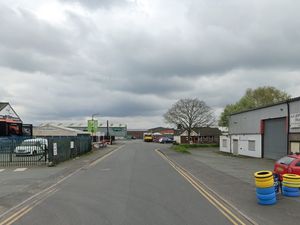Inside stunningly recreated Victorian greenhouse open to public at Shropshire National Trust property
A stunningly recreated greenhouse has opened to the public at a county National Trust property.
White Cottage Greenhouses, specialist craftsmen of historically authentic Victorian and Edwardian greenhouses, have recreated Benthall Hall’s historic Walled Kitchen Garden Victorian greenhouse at the Broseley venue.
The new White Cottage greenhouse is just over 12m long and 4.5m wide.
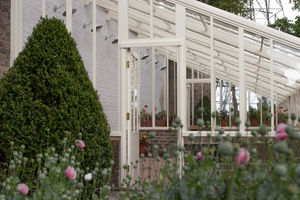
It includes cold frames running along its full length and sits on the original base wall – the only remaining part of the previous structure which dated back to the early 1900s.
Its reinstatement is an important piece of the National Trust’s careful restoration of the property’s horticultural history – both in terms of the greenhouse’s classic, Victorian architecture and its function within the garden.
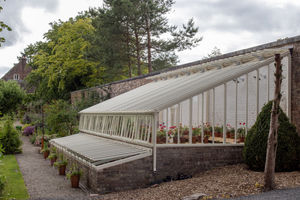
The new Victorian greenhouse is open to the public and will allow the National Trust property to increase the range of plants grown in the garden and revive the plant biologist George Maw's Victorian plant collection - including his historic crocus collection.
The new White Cottage Victorian greenhouse has been in the planning for three years, and the determined hope of Gardener in Charge, Nick Swankie, for over two decades.
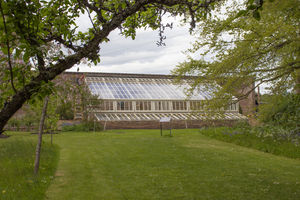
Glasshouses played a central role in Benthall Hall’s original garden ecosystem and history, created by tenants George and Arthur Maw who lived and gardened there from the 1860s.
George made frequent plant collecting trips to the Mediterranean, Eastern Europe, Morocco and the Atlas Mountains, collecting more than 3,000 plant species along the way.
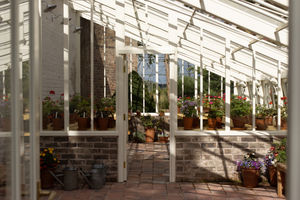
Many were planted at Benthall which he used as a trial garden to pioneer the cultivation of these new hardy herbaceous plants for English gardens.
Even in November, it was said, the garden had “plenty to enjoy” with the garden’s Victorian glasshouse being integral to Maw’s endeavours to control the Shropshire climate.
The greenhouse will enable Benthall Hall to expand its horticultural legacy, by propagating a greater range of plants and reviving many of the species originally introduced by George Maw.
Mr Swankie said: “More than a century has passed since the last of Maw’s crocus bloomed in its original bed, but the reinstatement of the glasshouse is an important milestone in the journey Benthall Hall’s team are on, to restart the work he began.
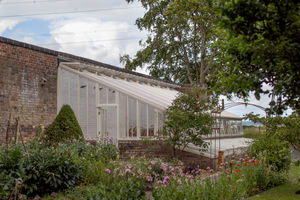
"This includes recreating the collection of crocus he describes in his monograph (including Crocus danfordiae and Crocus tauri,) and reintroducing other alpine plants described as being in the garden by William Robinson in his visit in 1881.”
Reimagined according to White Cottage’s proprietary Victorian specification, the new design and build replicates the original Benthall glasshouses, replaced more than once since Maw’s heyday.
The Victorians used a wide variety of timbers in their greenhouses, but almost always then painted them white to maximise light reflection.
The National Trust have selected an off-white to maintain its original spirit whilst allowing the new structure to sit comfortably in its historic surroundings.
“We want our greenhouses to feel like they’ve always been there” said Tori Tomlin, Director at White Cottage.
A key element of the reinstatement are the expansive cold frames which extend the full 12m along the greenhouse’s south-facing side and are unusually wide.
The new cold frames will benefit from modern technology in the form of discreet gas struts which will make opening and closing the huge lids a lot easier than it was 100 years ago and will house a display of Saxifrage – another species Maw was a pioneering collector of and an intrinsic part of Benthall’s horticultural legacy.
A spokesman for The National Trust said: “The general aesthetic is consistent and recognisable to visitors of National Trust properties and their glasshouses but with the intricacies of Benthall Hall intertwined.
"The existing character has been maintained, ensuring the changes are sympathetic to the overall historic context, character and appearance.
"White Cottage’s unique combination of Accoya timber frame and aluminium roof will ensure the longevity of the glasshouse and will help with lifecycle maintenance of the elements usually difficult to access.”
Inside, the layout replicates how the previous structure was organised, according to the National Trust’s archaeology report.
A central partition divides the growing space into two zones where optimal growing conditions can be controlled and maintained for the plants on display there.
Original Maw & Co encaustic tiles, made at the company’s Benthall Works, a field away from the greenhouse, salvaged and returned to Benthall recently, decorate the floor.
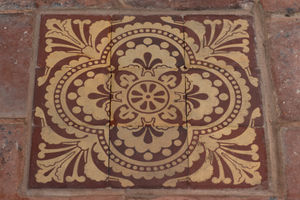
Ms Tomlin added: "It was a privilege to recreate this beautiful, Victorian glasshouse which was so integral to the garden of Benthall Hall’s long history of botany, cultivation and taxonomy.
"We’re passionate about making greenhouses that are truly synonymous with the Victorian and Edwardian eras; periods which marked a golden age of greenhouse design and where the efficacy of growing under glass was combined with aesthetic elegance and innovative engineering. Our Victorian specification offers the perfect platform for a sensitive and authentic reconstruction of the Benthall Hall structure.”
The new Benthall Hall Victorian greenhouse will be open to the public from mid-July.
Visitors can experience how George Maw was using his glasshouses, over 150 years ago, to showcase his extensive plant collection including, in early spring, some of Benthall’s potted crocuses.



